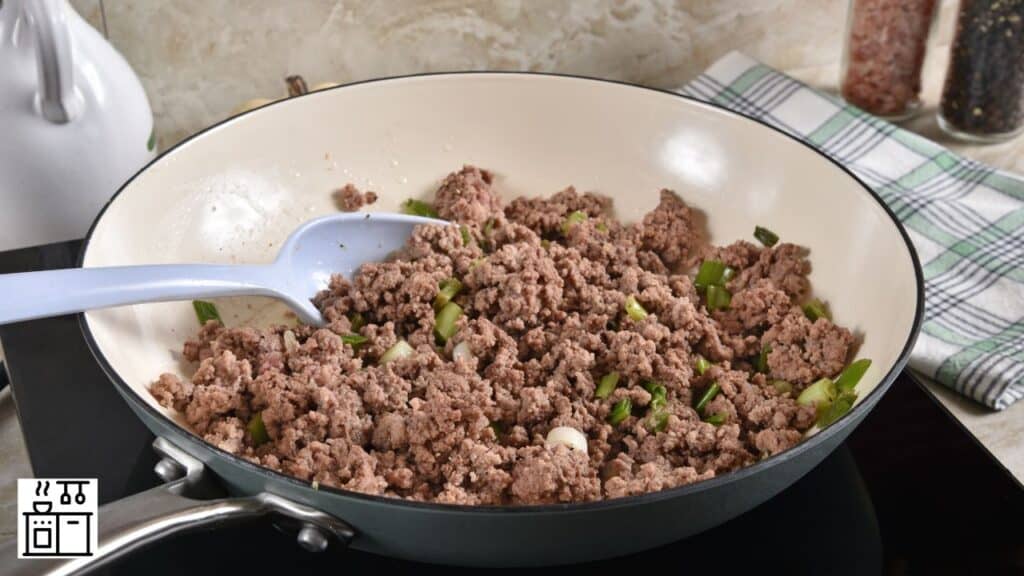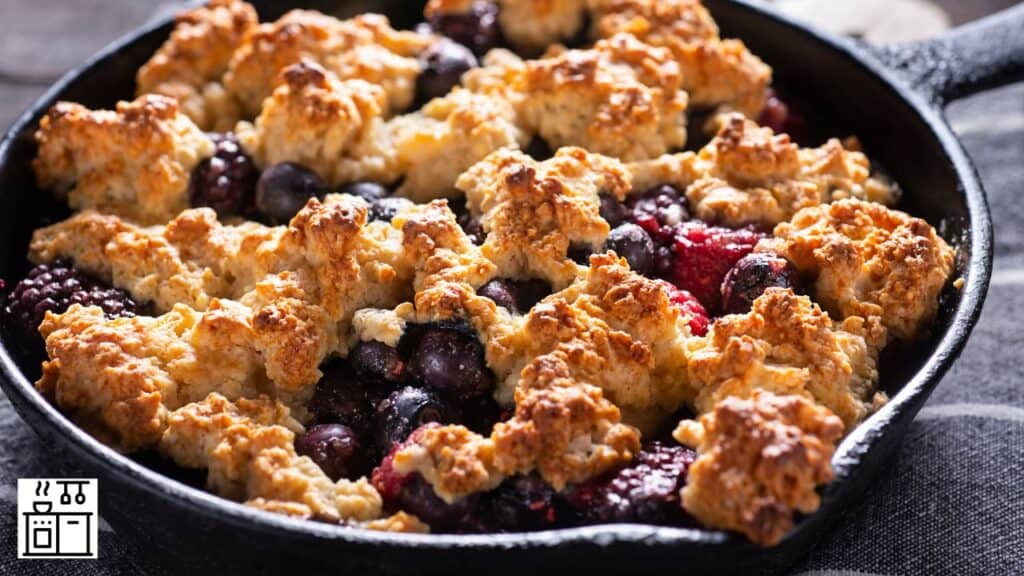A skillet is a frying pan with a flat bottom and low sides. But the term “skillet” can also refer to any frying pan with a long handle and a large cooking surface.
You can use a skillet for frying, searing, browning, and stir-frying.
Another version of a skillet is an electric cooking appliance with a built-in heating element and temperature controls.
Let’s look at how to use the different types of skillets in closer detail.
- Steps to Use a Cast Iron Skillet
- 1. Clean the Cast Iron Skillet
- 2. Brush Oil on The Surface If It's Not Pre-Seasoned
- 3. Heat the Skillet
- 4. Wipe the Excess Oil
- 5. Use a Little Oil for Cooking
- 6. Warm the Skillet Well Before Adding the Food
- 7. Don’t Store Food in The Cast Iron Skillet
- 8. Wash with Hot Water After Cooking
- 9. Re-Season the Pan if You Wash Away the Patina
- 10. Dry It Well Before Storing
- 11. Re-Season the Skillet Occasionally
- Steps to Use an Electric Skillet
Steps to Use a Cast Iron Skillet
Cast iron skillets are traditionally used for cooking on electric and gas stovetops.
They are handy kitchen utensils that you can find at an affordable cost and use for various needs. They also last a very long time.
Here are the different steps to follow to use a cast iron skillet efficiently.
1. Clean the Cast Iron Skillet
With continuous use, cast iron develops a shiny patina that makes it non-stick.
But washing the surface with soap and scrubbing it with abrasive cleaners can erode this patina.
So it’s usually not recommended to wash cast iron utensils with soap.
However, you can wash a cast iron skillet with soap and water before you season it the very first time.
Wash the skillet with soapy water to get rid of any dust or dirt on the surface. You can use warm water to clean it thoroughly.
2. Brush Oil on The Surface If It’s Not Pre-Seasoned
Some iron skillets are pre-seasoned. In this case, you can usually skip this step.
However, if you have a fresh iron skillet with a raw surface, you must season it. Seasoning refers to heating the surface with oil.
Oil seeps into the metal, filling the gaps and creating a uniform non-stick surface to cook food on.
Choose a neutral edible oil, like vegetable oil or corn oil for seasoning.
Brush it on the skillet surface and spread it evenly using a brush or paper towel.
This will help the oil seep into the porous metal surface and seal the gaps.
3. Heat the Skillet
After applying oil, the next step is to heat the skillet. There are two ways to do it.
- On the stove: Place the cast iron skillet on a medium flame and warm it. The surface will become hot and slowly start smoking. You can turn off the flame at this point and let it cool down naturally. This process will help the oil seep into the pores and create a smooth and uniform surface.
- In the oven: Preheat the oven to 400°F. Place the oiled skillet inside the oven and let it bake for an hour. It’s ready to use after this time.
Both methods make a cast iron skillet non-stick. However, we prefer the oven method since it uses gentle heat and sustained heating.
So, the oil seeps in slowly and uniformly into all the pores and creates a smooth and even surface.
4. Wipe the Excess Oil
Once the cast iron skillet has cooled naturally, use a paper towel to wipe the excess oil.
You can either use it after this or put it into storage till you need it.
5. Use a Little Oil for Cooking
A seasoned cast iron skillet will be naturally non-stick. The non-stick property will further improve with use.
But you should still use a little oil for cooking, at least for the first few times.
It will still be less than what you need for cooking on a stainless steel or aluminum pan.
6. Warm the Skillet Well Before Adding the Food

Another factor to remember is that cast iron heats slowly.
The heavy metal base takes time to warm up, and we recommend heating it on medium heat for the best results.
Once the cast iron skillet is hot, you can reduce the heat. It will allow the food to cook evenly.
Warming the skillet will also enable even browning of the surface. Wait till the surface is hot before placing food on it.
You can use a cast iron skillet to cook pancakes, meat, seafood, vegetables, burgers, and much more.
7. Don’t Store Food in The Cast Iron Skillet
There are two reasons to not store food in a cast iron skillet. Firstly, the iron on the surface can alter the food color.
It makes the bright colors in your food fade away and become a dull brown over time.
Another issue is that iron on the surface can react with acidic ingredients in the dish.
For instance, if you cook tomatoes on a cast iron skillet, the acid in it reacts with iron over time.
So it’s best to transfer the food into another storage container immediately after cooking.
8. Wash with Hot Water After Cooking
Once the cast iron skillet develops a shiny black patina, be careful while cleaning it. Soap will wash away the patina.
Additionally, never soak your cast iron skillet in the sink.
You can wash the skillet with hot water only. Dry it well afterward.
If food residue sticks to the surface, gently dislodge it using a paper towel or wooden spoon and proceed with cleaning.
For tough bits of food, use kosher salt and oil to scrape away the stuck bits.
9. Re-Season the Pan if You Wash Away the Patina
In certain cases, your cast iron skillet can end up being very greasy. In such situations, just hot water and soap will not do the trick.
You must use soap to clean the surface. While it will get the grease off, soap will also wash away the shiny patina.
In this case, you will have to re-season the pan.
Follow the same sequence of steps as when you seasoned it the first time to restore its non-stick properties.
10. Dry It Well Before Storing
Cast iron skillets are porous. The skillet surface will absorb any moisture near it. But moisture will make the iron rust.
Though you can remove this rust and reuse the skillet, it’s not easy.
To avoid it, dry the skillet thoroughly before putting it away.
After washing the pan, use a dry kitchen towel to get rid of any remaining moisture. Wipe it dry and then place it in storage.
11. Re-Season the Skillet Occasionally
The best thing about a cast iron skillet is that it retains its non-stick properties for a long time.
However, the seasoning may erode or become dull if you don’t use any oil for a long time.
It can also erode if you wash it with soap and scrub the surface.
To keep the skillet good as new all the time, season the surface every few months. You can follow the same sequence of steps as the first time.
Spread oil over the surface and heat it on the stovetop or in the oven till the skillet surface starts smoking.
Steps to Use an Electric Skillet
There are two simple differences between a regular cast iron skillet and an electric skillet:
- An electric skillet is powered by electricity.
- You can adjust the temperature by turning the knobs or using the controls on it.
Apart from these factors, they work in the same way.
So, you can follow the same precautions and instructions for using an electric skillet.

